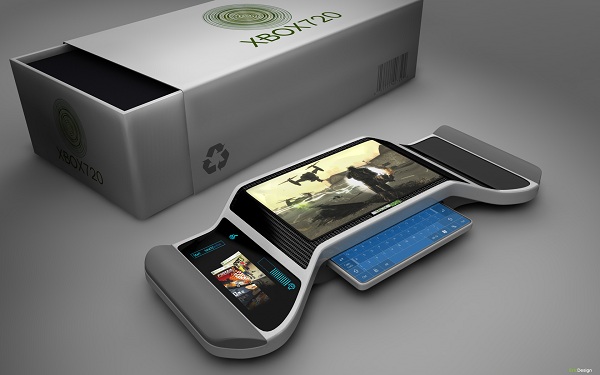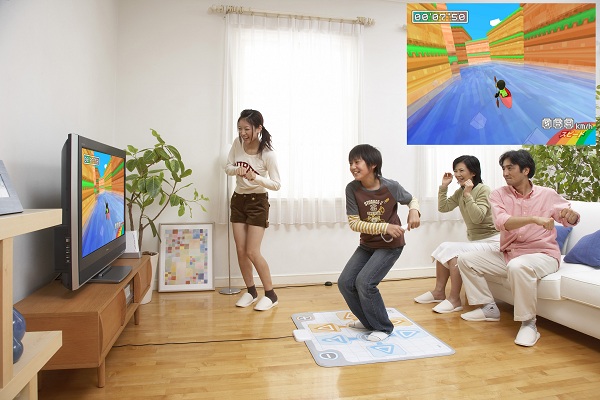With the recent successful launches of Microsoft’s Kinect and Sony’s Playstation Move, it is now more likely that this generation of consoles will last longer than in the past.
While previously, a 5 or 6 year cycle has been the norm, it’s conceivable that this generation might go longer – maybe 7 or 8 years – because of this new tech that appeals to a broader demographic, prolonging the sales potential of each console.
Still, that hasn’t stopped speculation about what the next generation of consoles might look like. At hardcore gaming communities like NeoGAF, speculation rages about the kind of technology the successors to the Wii, Xbox 360 and PS3 will have.
But those expecting the next generation to simply be about an increased in hardware specs, or better technology for motion gaming are in for a surprise. Because, though every generational leap so far has been driven primarily by technology (with perhaps the exception of the Wii), the world is now a new place: media savvy, media saturated, and constantly connected to the social. In short, the next gen of games will, rather than focusing only on hardware, will be about the network and its social components.
What The Current Generation Changed
This generation has, in terms of hardware sales, software sales and profit, been mainly dominated by Nintendo’s Wii. The reason for this is clear: by making their console easier to use for a larger demographic than ‘core gamers’, Nintendo drastically increased the number of potential customers.
Yet, at the same time, the other massive shift this gen has been the mass acceptance of online gaming and online services: Xbox Live has been a massive success, and media services like Netflix, video downloads, and even services like Playstation Home have become money makers.
That means this gen has been about two things: accessibility and the network. And it’s these two things that will define the next generation – particularly since those two trends have extended beyond gaming to encompass all tech.
Infrastructure, Not GPUs.
So, what might this look like? Well, it’s a new approach to gaming that incorporates the social at the most fundamental levels of gaming.
Now by this, I do not mean Facebook-like games. Instead, I mean that a social infrastructure will be just as important a selling point as the games themselves. Nintendo, Microsoft and Sony will place a great deal of emphasis on creating a network that is a social destination, much like Facebook is on computers and phones.
It also means that all the functions of a console will have a social aspect – movie watching (like Live’s current party system), photo sharing, listening to music, sharing playlists, videos etc. It also means there will be tighter integration with services like Facebook, Twitter, Flickr, Foursquare – and for Microsoft and Sony, integration of these network features across mobile platforms like Windows Phone 7, the PSP Phone and PSP2. The network will become a central part of the appeal of these devices, because they will extend beyond the devices themselves.
And what’s more, the games themselves will take advantage of that social infrastructure in new ways. Rather than simply being able to play against others as you do now, you might get something like a game related message or hint from a Facebook friend while you’re in game. When a game character who is meant to be ‘you’ reminisces about memories, you might see your friends’ pics. Breaking news will spill into games set in the current era. To wit, the network will dissolve the line between the fictional worlds of gaming and your social graph.
The big change here will not simply be a new way to frag your friends, but a tightly integrated ecosystem the lays the foundation fora new kind of social gaming – one that isn’t like either Farmville or Modern Warfare, but, like the very best games, is complex and sophisticated without being needlessly complicated.
Consoles: A Window To The Networked World
The whole reason this will be done will be to make consoles more appealing in the face of a myriad of other distractions and competition for what you spend your money on. The console will become your gateway to a particular ecosystem of media, social interaction, virtual worlds and online gaming.
What’s more, Nintendo will likely make their new approach to online a core feature or “Wii 2′, and will continue their emphasis on accessibility. People who would have never dreamed of playing a video game against a family member half-way across the world will be sold on that very idea. With Sony and Microsoft’s move toward motion gaming, it’s also clear accessibility and mainstream appeal will be key.
To be crystal clear, yes there will be a hardware bump. New consoles will be faster, have better HD graphics (likely all actual 1080p), might all switch to Blu-Ray and will certainly come with large hard drives. But unlike previous generations, that new tech will only be half of the story.
We now live in the age of the network, in a time when all media is social and when hardware must primarily be easy to use, not just powerful. As a result, the next generation of video game consoles will not be about how can push the most polygons; it will be about who connect the most people and connect them best to the media they love and that makes up their lives.





GIPHY App Key not set. Please check settings
One Comment